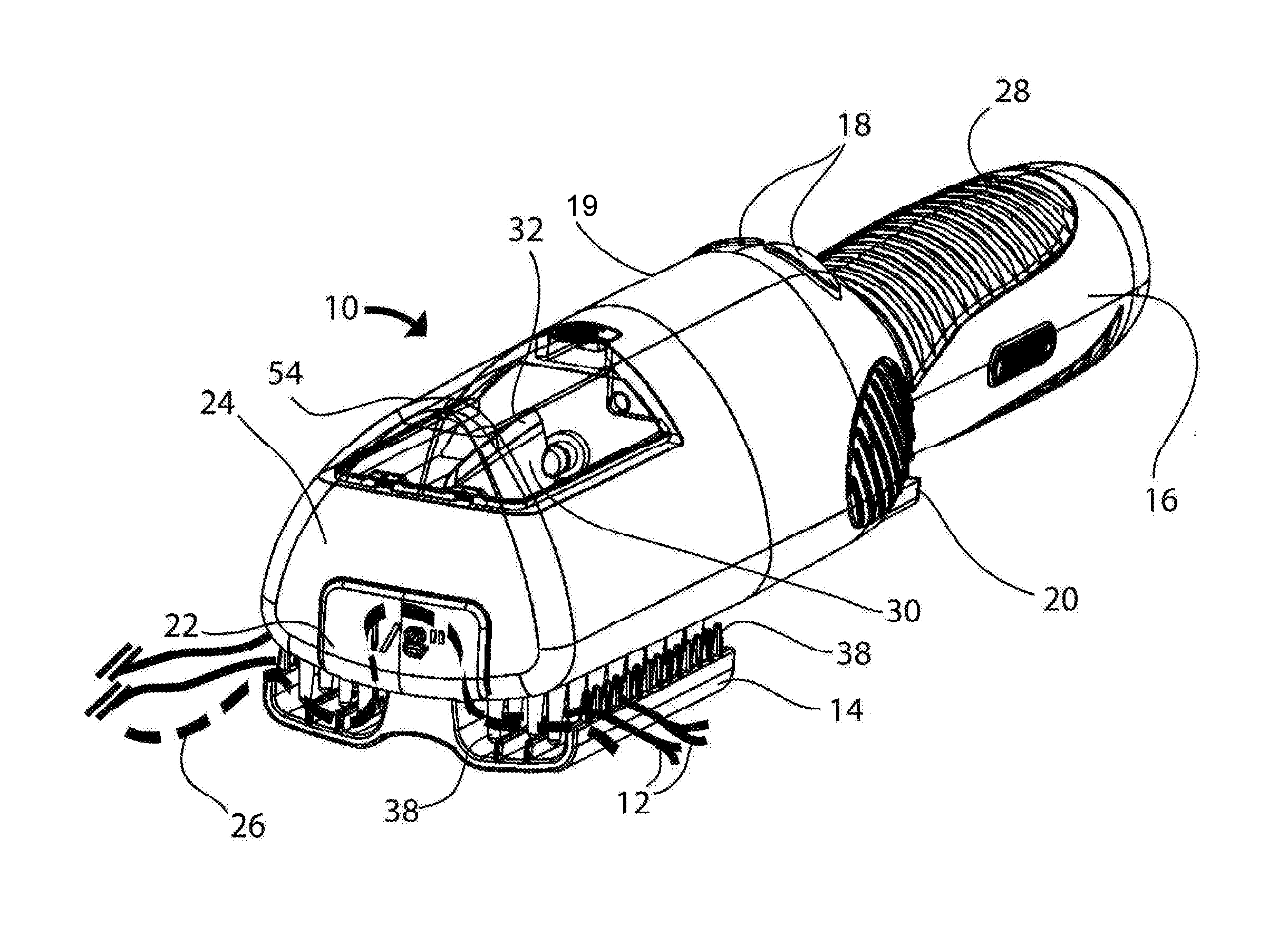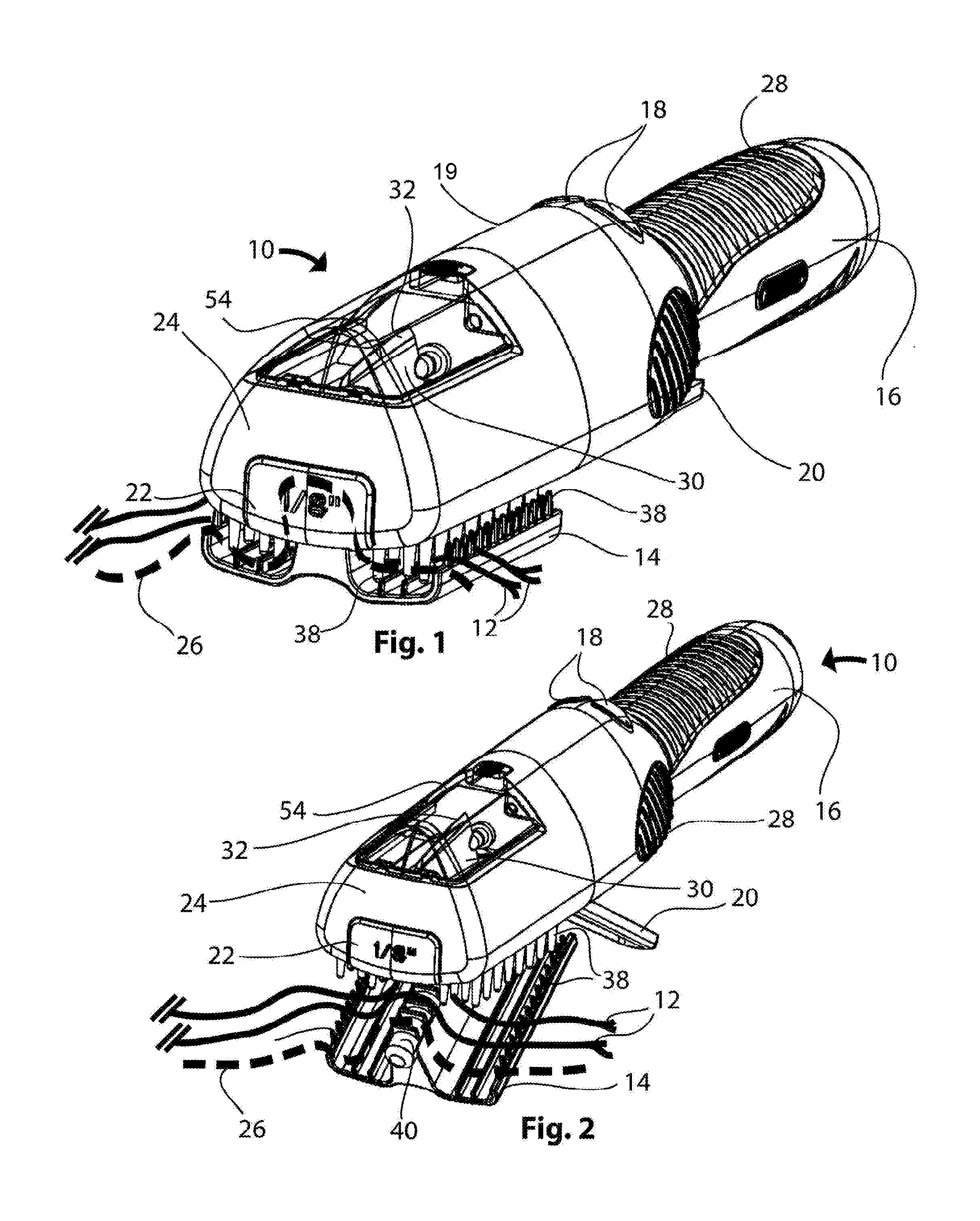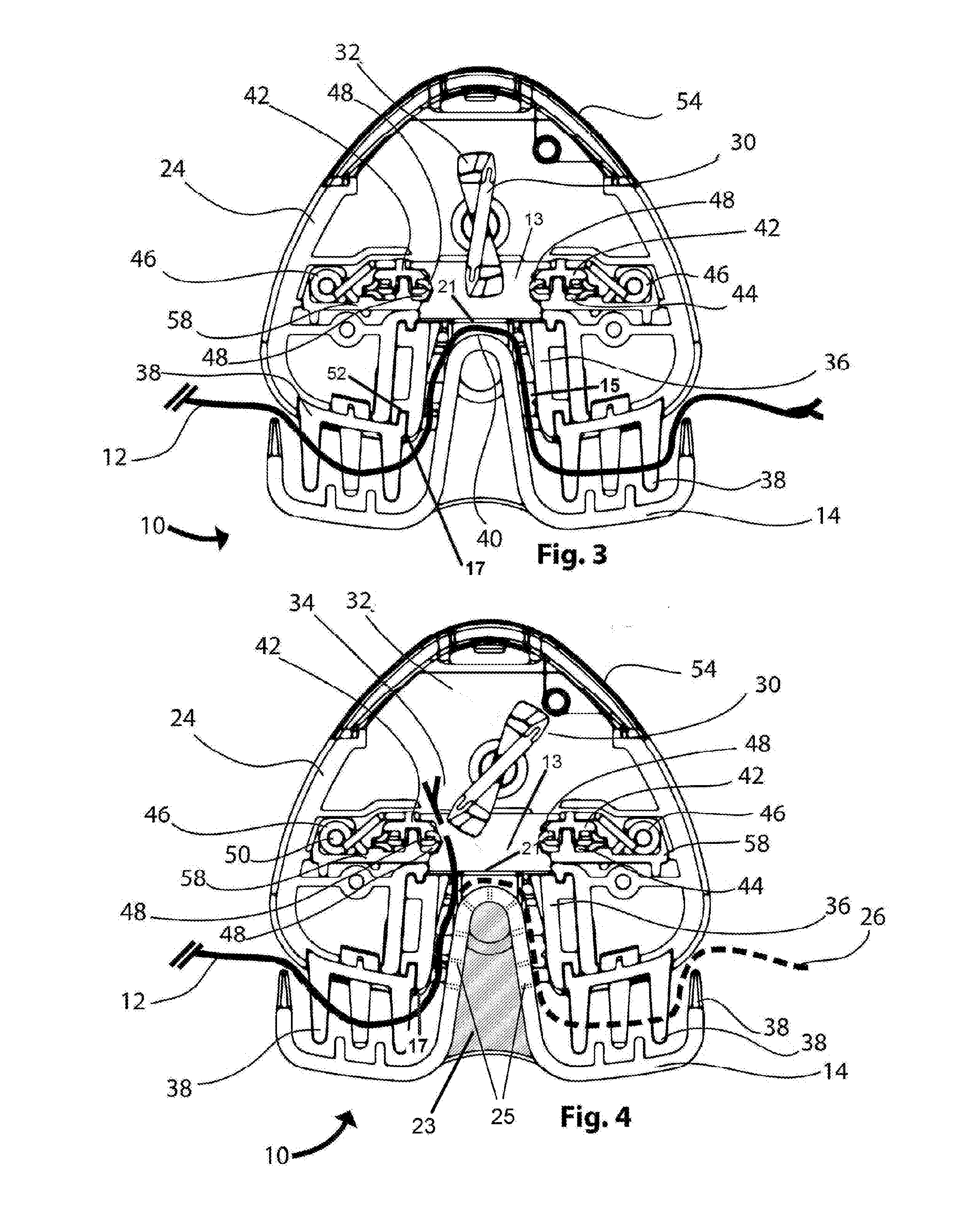However, one vexing problem occurs whether the hair on a person's head is being
cut by a trained stylist of the individual needing the trim or by an amateur.
Split and damaged hair ends have an appearance which can cause the hair to look unhealthy even where the rest of the
hair follicle is in perfect condition.
One preferred current method of trimming split ends and damaged hair ends from the rest of the
hair shaft, involves a time-consuming process.
An errant cut will yield harsh marks, uneven cuts, and the procedure is fraught with the possibility of accidentally cutting the center portions of healthy adjacent hair shafts yielding undesired results, especially where the person being groomed has very long hair.
Split ends and damaged hair ends are an especially vexing problem in the case of hair shoulder length and longer, in styles worn by women and men.
Because of the varying length of the thousands of strands of hair involved from the
scalp to the shoulders or below, it is especially time-consuming to try to trim only the distal ends of the hairs, a very small relatively equal amount, while not accidentally cutting mid sections of long adjacent strands.
This process is made more difficult when the style of haircut is tapered through the length and just the short ends require cutting to maintain the tapered style.
Because of this tedious process, hours can be spent by professional hair stylists trying to trim the split ends on a person's long hair.
Further, because of the delicate nature of the process, it is virtually impossible for a person with long hair to trim their own split ends and damaged hair ends.
Such would involve cutting the split ends of hairs on the back of their head using a mirror and scissors which is obviously a task fraught with peril.
One slip and their hairstyle could be ruined by cutting some long strands of the hair laying adjacent to the distal split ends or damaged hair ends on shorter hair shafts.
While many of these devices address the issue of cutting hair and styling it, few devices address the ongoing problem of split ends and damaged hair ends on the distal ends of the hair shafts.
Few provide an easy and dependable means for removing only a predetermined
short length of the unhealthy distal ends.
As with split end removal, this task can be very tedious, if not an impossible task, with the thousands of hairs on an individual's head.
However, Smith requires many adjustments by the individual using the device and it is intended to cut long sections of hair as determined by the circumference of the rotating
brush.
The Smith device, because of its arrangement cannot be configured to cut only a
short length of hair from the distal ends of the hair shafts in relatively equal amounts as required to trim split ends and unhealthy or unattractive hair ends.
Further, because the
brush must be drawn through the hair by hand to rotate the
brush, the user is in constant risk of having hair encircle the brush into a tangle or of pulling the device sideways through the hair and accidentally cutting off broad swatches of adjacent hair.
This pulling may produce a great deal of discomfort for the individual receiving the haircut.
Such an arrangement precludes use by an individual in cutting his or her own hair and requires constant attention and the skill of a stylist or second person to cut the hair on which the device is being used.
It would be virtually impossible for a user to cut the hair on the back of his or her own head in this manner.
Further, it would be virtually impossible without great effort and time to cut only a substantially equal portion from the distal end of individual hair strands while leaving adjacent longer hair strands untouched with this device.
This device is, however, designed to cut bangs rather than split ends, and because as taught it requires two hands to use it, it is unlikely that anyone could use this device on the back of the head without the aide of another individual to guide the device.
Again, trimming substantially equal amounts from the distal ends of hairs would be extremely time-consuming and require great dexterity if it could be accomplished.
While a leap forward in the art, the Talavera device lacks an easy cut length adjustment and employs a
metal rotating blade for cutting which can dull and which may cause concern that hair strands might wind upon it and be cut, or the blade might move off its axle and accidentally cut central portions of hair strands.
 Login to View More
Login to View More  Login to View More
Login to View More 


